From innovator to retail release: Samsung's Gear VR headset is a big step forward

When it comes to virtual reality, products have been bursting onto the scene and making a serious splash all year long. Whether it's been Google Cardboard or the not yet released HTC Vive there has been plenty of talk. With good reason too, as VR has given us some excellent new ways to view our media, and play a new wave of games made for these VR headsets.
Samsung's Gear VR Innovator Edition has been around for some time now, powered by Oculus. Just in time for the holidays they've released the more polished version with the Samsung Gear VR. There are some great design choices that give the Gear VR an all-around better feel than its predecessor.
Let's take a look at what has changed since the Innovator Edition, as well as what has stayed the same.
The new hardware
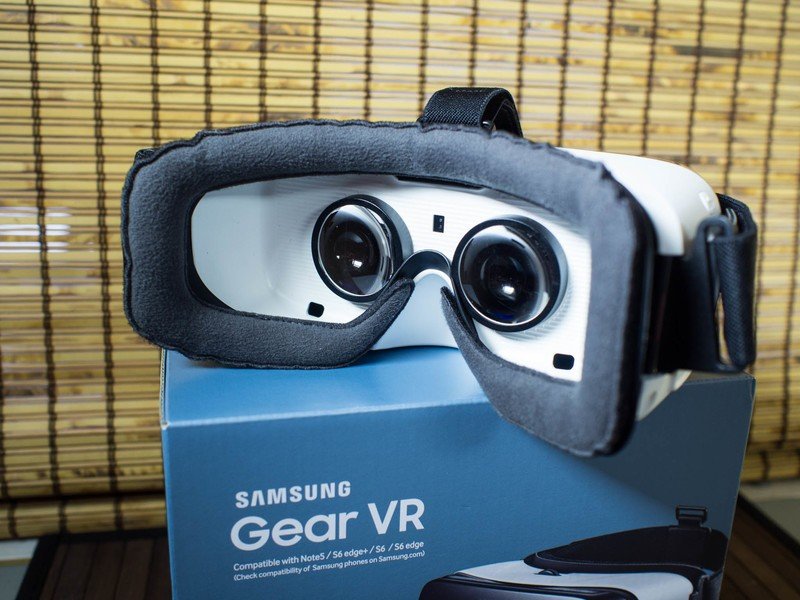
Samsung has brought us a polished product that feels good in your hand, and on your face.
The big difference between the original Innovator Edition and the new Gear VR is easy to see in the design. While they look nearly identical from a distance, everything from the way phone clips into the visor, to the head and side straps have been updated and adjusted. It all comes together well, bringing us a lighter, better-designed product meant for anybody to use.
Anyone who wears glasses should grin at seeing that one of the biggest design changes is how the headset sits on your face. There is now a much wider and deeper interior space, so you won't need to take off your glasses to enjoy the Gear VR. The top of the headset is mostly unchanged, and it still has a wheel you use to make fine adjustments to the focus. There are increase and decrease minus indicators, for what that's worth — you'll really just be adjusting by feel anyway. The bottom of the headset is extremely similar to the original design, with one glorious new feature. You can now charge your Gear VR while using it, thanks to an included microUSB passthrough. Anybody who had to suffer the indignity of turning off the Gear VR Innovator Edition to charge it will understand why a fist pump is in order. There also are two slits along the bottom of the headset that serve as air vents to reduce fogging on the lens.
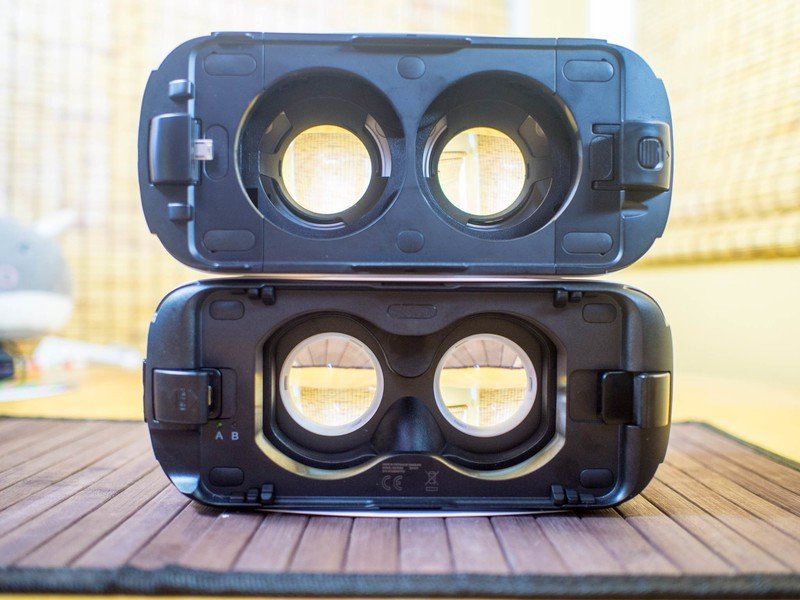
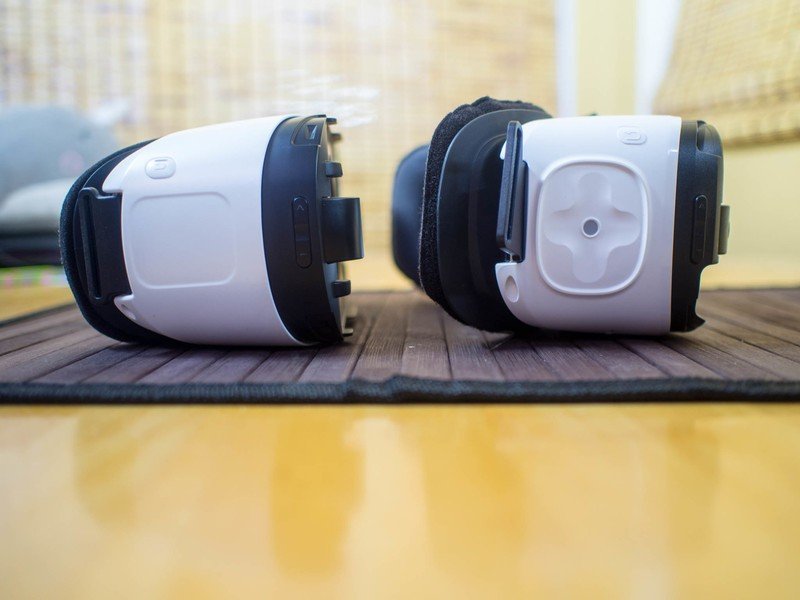



Likewise to the top and bottom of the Gear VR, there are only small aesthetic changes to the left side of the headset. This is now where the only branding on the headset can be found. You'll see slight changes but the same information — larger bold letters reading Gear VR, with "Powered by Oculus" underneath in slightly smaller size with an updated logo.
Get the latest news from Android Central, your trusted companion in the world of Android
One of the most visible changes you'll find, is the look of the head strap. The molded plastic top strap has been replaced with a regular velcro strap in the same style as the bottom strap. You'll use the same mechanism as the original Innovator Edition to clip your compatible phone into the Gear VR, but it is a bit stickier and will take some getting used to before you can comfortably swap your phone in and out of the headset.
The right side of the Gear VR headset is where the first really noticeable change is going to crop up. The original Innovator Edition had a slightly depressed square for a touchpad, with the small back button set just above it towards the back of the headset. While both the button and the touchpad themselves still exist, they've both been given a slight upgrade. The touchpad is now a much larger oval with a raised border, and a sort of capacitive D-pad inside. Since it was always too easy to slip off of the Innovator Edition's touchpad, the new design makes a ton of sense and works quite well in practice. The back button is now on the opposite side of the touchpad towards the front of the headset, and has gotten a style upgrade with a more pronounced back arrow raised off the button. Another cool addition is the protector that clips onto your phone, protecting the back while you are using the new Gear VR headset.
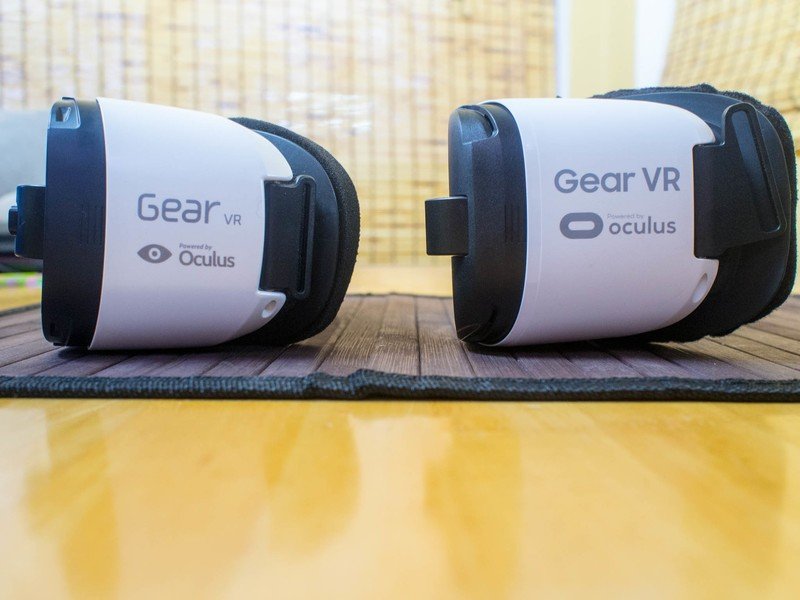
The new Gear VR is a great update on the original product in terms of design. It's easy to see that Samsung figured out what needed to be changed or updated, and then applied changes there, without trying to rebuild the Gear VR from the ground up. Looking at the two headsets side by side, the Gear VR looks like a larger but sleeker device. The Gear VR feels comfortable and stable in your hand, and it doesn't feel bulky or tight when you are wearing it on your head.
Considering that's the point, it's a pretty big deal.
The new software
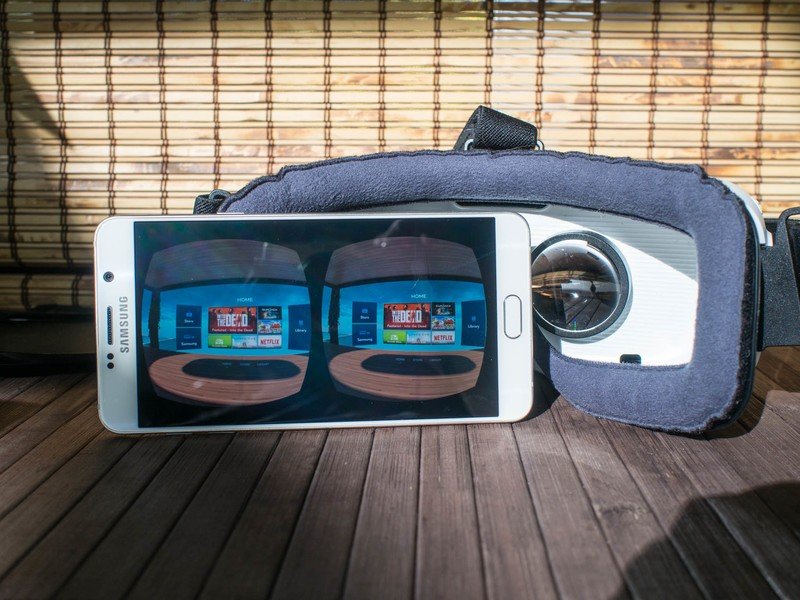
Oculus keeps the interface basics, but brings us a beautiful new display.
There is no question that the new Gear VR gives us an increased resolution to bring us an absolutely beautiful display, and you might be tempted to just sit there and enjoy it for a few minutes when you're first getting started. The basics have stayed the same — a very visual menu system — and you're not going to find any real differences while using the Gear VR instead of the Innovator Edition. Since the Gear VR is compatible with newer phones like the Samsung Galaxy S6, Galaxy S6 Edge, Galaxy S6 Edge + and the Note 5 you're going to get a more visually stunning display thanks to the higher resolution. But you'll still be seeing individual dots all over the place.
The only real difference that you'll find when it comes to the interface is in the background to the home screen. All of the menus still work precisely the same way, with a combination of looking and using the touch screen, and either tapping or holding focus to select. The Home screen now is a 360-degree, wide-open, high-tech apartment (think the movie "Oblivion," actually), with the on-screen menu hanging over it. You can't interact with the apartment in any way, but it is noticeable if you were using the original Innovator Edition since you get used to that background hanging out with you.

Both the original Gear VR Innovator Edition, and the new Gear VR are amazing headsets that are fantastic for anyone, whether you have been keeping up with phone based VR or not. They are limited by the phones that are compatible with the Gear VR, but the compatible phones are some of the best ones out on the market already. It's clear to see that Samsung put some serious thought into both the design of the Gear VR and making it accessible to a wider group of people. With some fantastic changes like updating the size allowing for those with glasses to comfortably wear the headset, a more tactile touchscreen and the ability to charge the Gear VR while you are using it.
All of the changes that have been implemented make the Gear VR a far more user friendly device. It makes the Gear VR seem like the natural evolution from the Gear VR Innovator Edition, building on a solid foundation and tweaking things without changing the overall feel of this fantastic VR headset.

Jen is a staff writer who spends her time researching the products you didn't know you needed. She's also a fantasy novelist and has a serious Civ VI addiction. You can follow her on Twitter.
